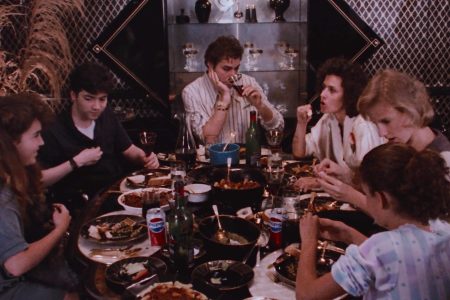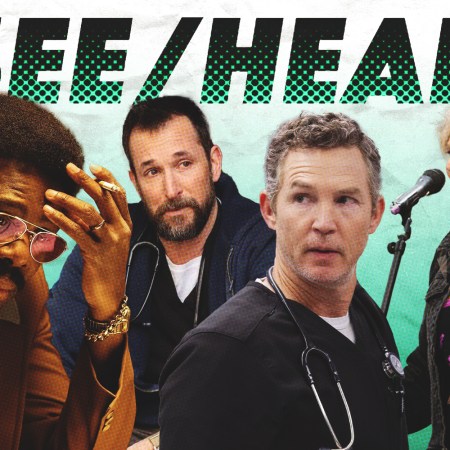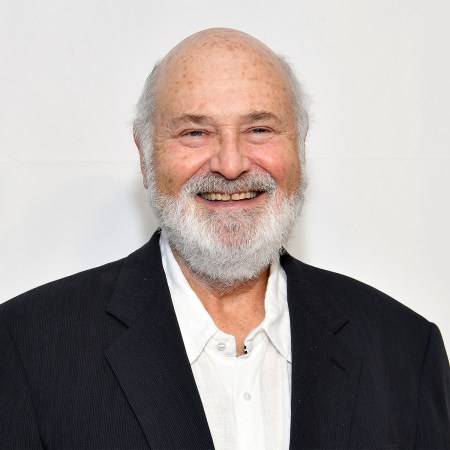“Say hello to my little friend.”
Were one to hear Al Pacino say that these days, it would be fair to wonder whether he was introducing Roman Pacino, the son the 84-year-old actor welcomed with his 30-year-old girlfriend Noor Alfallah in June of last year. When Pacino uttered the six-word phrase a bit more than four decades ago while portraying coked-out Miami drug kingpin Tony Montana in the 1983 classic Scarface, there was no doubt about the subject of his introduction: a Colt AR-15 equipped with a grenade launcher.
The bloody firefight that follows Pacino introducing his firepower-packing friend (who really isn’t all that little) results in mass destruction and multiple deaths, one of them being Montana’s. As author, film critic and NYU professor Glenn Kenny, who just released The World Is Yours: The Story of Scarface earlier this week, points out, Montana’s demise fits perfectly with how he lived in director Brian De Palma’s classic rags-to-riches crime film.
“People like to see someone who decides he wants something and that he’s going to get it through sheer balls. That’s the story of Tony Montana,” Kenny, who previously penned Made Men: The Story of Goodfellas, tells InsideHook. “Even when he is going out, he’s got more stones than any other movie villain you’ve seen. None of it makes sense when he’s riddled with bullets and is still standing there. He should be dead, but he doesn’t die until he gets one in the back of the head. As long as he can see the bullets coming, he can absorb them. But the hit he doesn’t see is the one that kills him.”
Already fairly familiar with that fatal shot and everything that led up to it having seen Scarface seven or eight times, Kenny, who spoke with De Palma, Pacino’s co-star Michelle Pfeiffer, Scarface scriptwriter Oliver Stone and others while doing his research, watched Montana’s rise and fall at least two dozen times while writing his book.
With The World Is Yours already on shelves, we spoke with Kenny about what it was like to spend all that time with Montana and Scarface‘s continuing significance four decades after its release.
InsideHook: Why do Scarface and Tony Montana still resonate with audiences after more than 40 years?
Glenn Kenny: It’s a compulsively watchable movie. Pacino’s performance is larger than life and so compelling that it just sucks you in. Whether you think it’s credible or not, he’s doing something I think is on a scale no other actor has done before or since. The closest you’ll get to Pacino’s performance is what Paul Muni did in the 1932 Scarface. It was very, very big. Orson Welles once called Jimmy Cagney a great displacer of air and Pacino’s performance as Tony really does that. Tony Montana takes over whatever room he is in whether he is drunk or sober or whatever. Slumped in a chair or holding a machine gun, he is commanding. It’s one of the most compelling performances by an American actor in the history of cinema in a movie about the rise and fall of a vicious, ruthless gangster.

IH: Tony is pretty terrible in many ways, but you find yourself rooting for him anyway. Why is that?
GK: What makes Tony Montana so compelling is different than what made Henry Hill [from Goodfellas] so compelling, Henry Hill is compelling because you have a working-class identification with him. He’s a mob foot soldier. Tony Montana is a guy who wants to get to the top and won’t stop and will do anything until he gets there. There are a bunch of times in that movie where he should be dead and is basically daring people to kill him. He goes into situations understanding they are binary. Either he walks out triumphant or he’s dead — and he’s fine with that. He has enough confidence to think he’ll succeed and get what he wants. The thing is, he doesn’t have a very good time doing it.
IH: What do you mean by that?
GK: There’s one scene in the middle with a montage. We see him living it up and he gets the tiger that’s on the cover of my book and that’s it. For three minutes out of a three-hour movie, everything’s great. Then, it’s done. Then there’s a wife who hates him, too much money, a sting and everything else. He works for an hour and a half, gets three minutes of gratification and then starts sliding down before getting one in the back of the head. It’s an all-American story, let’s face it.
The Definitive Ranking of Every “Goodfellas” Food Scene
Featuring razor-sliced garlic, that famous stroll through the Copacabana kitchen and more sausages than you can countIH: Compelling as Pacino was in the role, do you think he could be cast to play Montana in the Hollywood of today?
GK: I delve into the controversy about Al Pacino, an Italian American guy, playing a Cuban guy, a little bit in the book. In the film, it’s very plainly stated at the beginning that Tony Montana has a North American father, so the character’s not 100% Cuban. I don’t want to be dismissive, but as someone who’s interested in filmmaking, I ultimately find these purity tests pretty tiresome. I don’t think prohibitions are quite as constructive as some people seem to think. Edwin Torres, the Puerto Rican author, judge and lawyer who wrote Carlito’s Way, someone told me a great story about one of his gangster friends in Spanish Harlem saying, “Why you got this Italian guy playing a Puerto Rican?” And Torres is like, “‘Cause he is the biggest movie star in the world, you fucking idiot.” Torres never had a problem with it.
IH: Is there one takeaway you’d like readers of The World Is Yours to depart with?
GK: Actually, no, I’m like the Spanish Inquisition. Three takeaways. I’d like to enhance their appreciation of Scarface and their appreciation of Brian De Palma as a director. Writing the book, I realized I unabashedly took De Palma’s side all the time. I also want people to break their idea of the old black-and-white movies not being interesting and go back to some of the oldies because they are good and entertaining and classics for a reason. Go back and watch the ’32 Scarface and Little Caesar and Public Enemies. That sort of thing.
This article appeared in an InsideHook newsletter. Sign up for free to get more on travel, wellness, style, drinking, and culture.


























